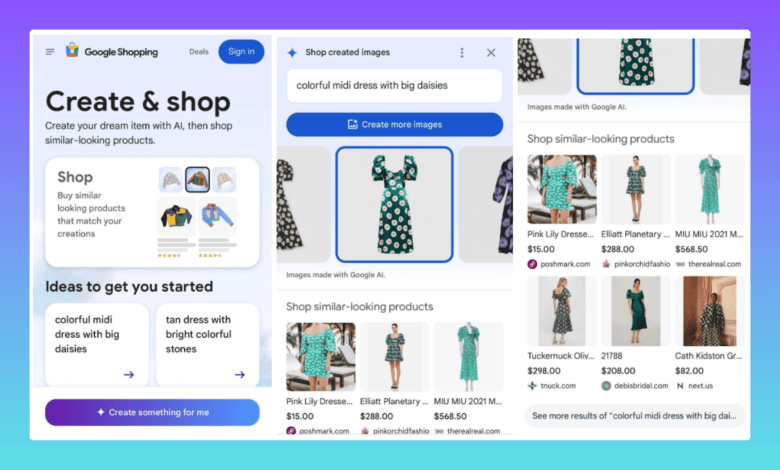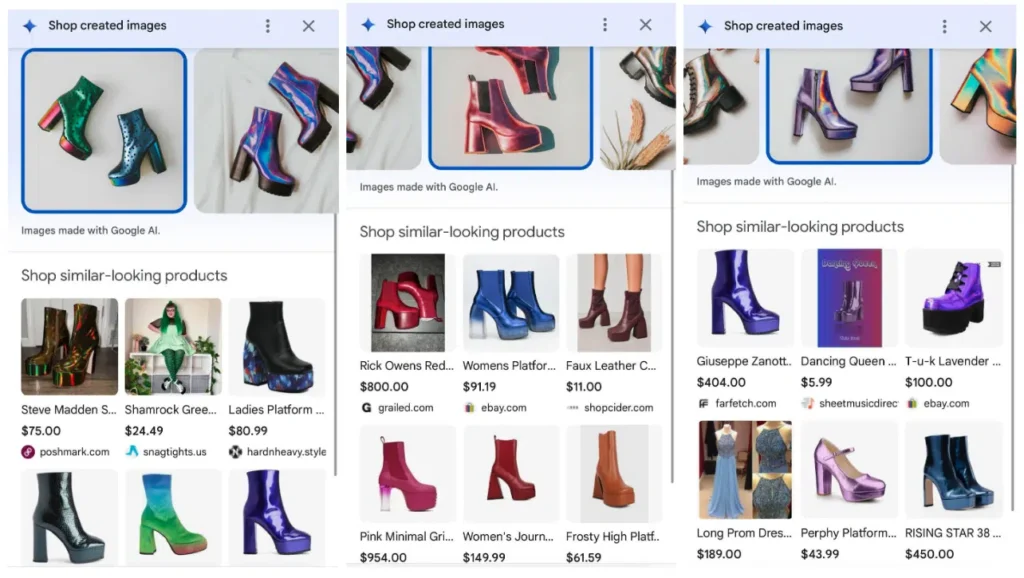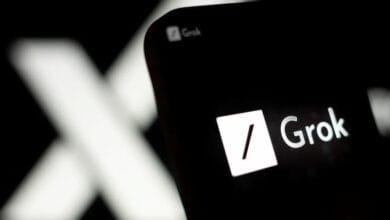Google Vision Match vs. Traditional Search: Early Insights on AI’s New Shopping Tool

▼ Summary
– Google’s “Vision Match” feature in Shopping aims to generate images of user-described products and show similar real-world items for purchase.
– Comparative tests revealed that Vision Match often returned inaccurate results, including unrelated products and items from different categories.
– The feature frequently suggested products from lesser-known retailers with higher price points compared to traditional search results.
– Vision Match struggled with brand recognition and current fashion trends, often failing to provide relevant or official brand listings.
– Traditional Google search consistently delivered precise, relevant results with valuable context and trustworthy sources, making it a more reliable shopping tool.
Imagine describing your ideal product – maybe something unique or trendy – and having Google’s AI instantly generate an image of it, then show you similar real-world items you can buy. That’s the premise behind Google’s “Vision Match” feature in Shopping. It aims to bridge the gap between your imagination and actual online listings by creating a visual starting point, even if the AI-generated item doesn’t technically exist.
On the surface, it sounds like a futuristic leap for online shopping. But does this AI-driven approach actually deliver better results than a good old-fashioned Google search? We dove into a comparative test to see how Vision Match stacks up against traditional search results when looking for real products.

Putting AI Shopping to the Test
The core idea was simple: run the same product searches using both the new Vision Match feature and standard Google search/shopping tabs, then compare the results for relevance, accuracy, price, and overall usefulness. The tests included:
- A very specific, trendy item.
- A broader, common clothing item.
- A search focused on a major brand.
- A current fashion trend.
The results painted a surprisingly clear picture.
Where Vision Match Currently Falters
Across multiple tests, the Vision Match feature, while technologically interesting, showed significant weaknesses compared to traditional search:
- Accuracy Issues: Time and again, the “similar looking” products suggested by Vision Match were often inaccurate. Searches for specific items returned unrelated products, different styles, or even items from entirely different categories. For instance, a search for specific boots might yield results including dresses or non-matching footwear.
- Questionable Retailers & Pricing: The real products surfaced via Vision Match frequently came from less-known retailers or resale platforms. Furthermore, the average price points for suggested items were sometimes drastically higher than those found through a standard search for the exact same type of product.
- Brand Blindness: Even when searching for a globally recognized brand like Nike, Vision Match struggled. Results often included competitor brands or completely unrelated items, with very few links leading directly back to the brand’s official site, unlike the free listings in traditional search. This raises concerns about visibility for brands, especially smaller ones.
- Trend Trouble: When tasked with finding items related to a current fashion trend (like “barrel jeans”), Vision Match seemed completely lost, returning a jumble of unrelated styles rather than the specific trending cut.

Traditional Search Still Delivers Precision
In stark contrast, traditional Google search consistently provided results that directly matched the queries.
- Relevance is Key: Searching for “men’s red button-down shirt” yielded exactly that – red button-down shirts. Searching for “barrel jeans” brought up barrel jeans. The precision was significantly higher.
- Helpful Context: Standard search results often include valuable details upfront – discount information, customer ratings, and product attributes (“comfortable,” “easy to clean”) – making it easier for shoppers to evaluate options quickly.
- Trustworthy Sources: Results generally featured well-known retailers and, particularly in free listings, direct links to the brand’s own website, offering a more reliable shopping path.
The Verdict: Potential vs. Practicality
Based on this hands-on testing, Google’s Vision Match is an intriguing concept showcasing AI’s ability to generate visuals from text. However, in its current state, it falls considerably short as a practical shopping tool. The generated AI image might look interesting, but the connection to actual, relevant, purchasable products is often weak. Accuracy, retailer quality, price consistency, and trend awareness were all areas where traditional search proved far superior.
For advertisers and brands, this means that while keeping an eye on AI developments is crucial, optimizing for traditional search remains paramount. Users seeking specific products are likely to stick with the search methods that reliably deliver accurate and relevant results. Vision Match has potential, but it needs significant refinement before it can truly challenge the effectiveness of simply searching for what you want to buy.

Source: (Search Engine Land)






